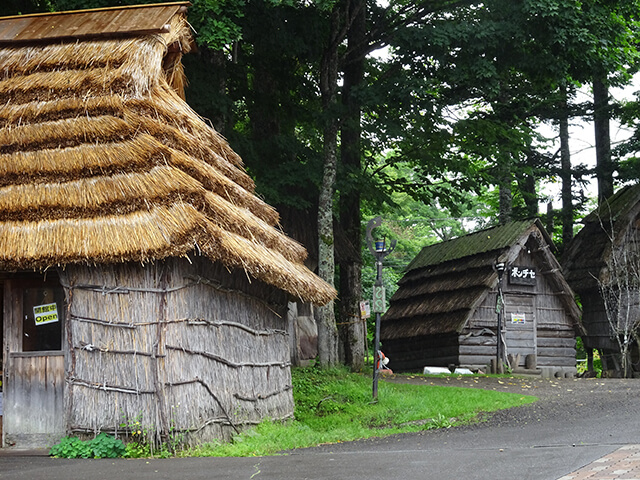Japanese cuisine is very varied, placing great emphasis on fresh and local ingredients, with a focus also on seasonal produce, as well as regional specialties.
The harvest time and fishing seasons are eagerly awaited and ingredients are used when they are at their prime. Some foods in Japan are now well known outside of the country – sushi, ramen, and tempura are the best known examples – but Japanese food stretches well beyond these dishes.
 Breakfast
Breakfast
A traditional Japanese breakfast consists of rice, grilled fish, nori seaweed, natto, pickles, miso soup, and an egg or egg dish of some kind and this is the type of breakfast you would typically encounter at a traditional Japanese inn. The level of ornateness in preparation may vary between a smaller homey and family-run minshuku and a fuller service ryokan with a dedicated chef. In Western style hotels, breakfasts are more typically buffet options that offer both Western items including sausage, eggs, cereals, fruit or yogurt, as well as Japanese breakfast dishes.
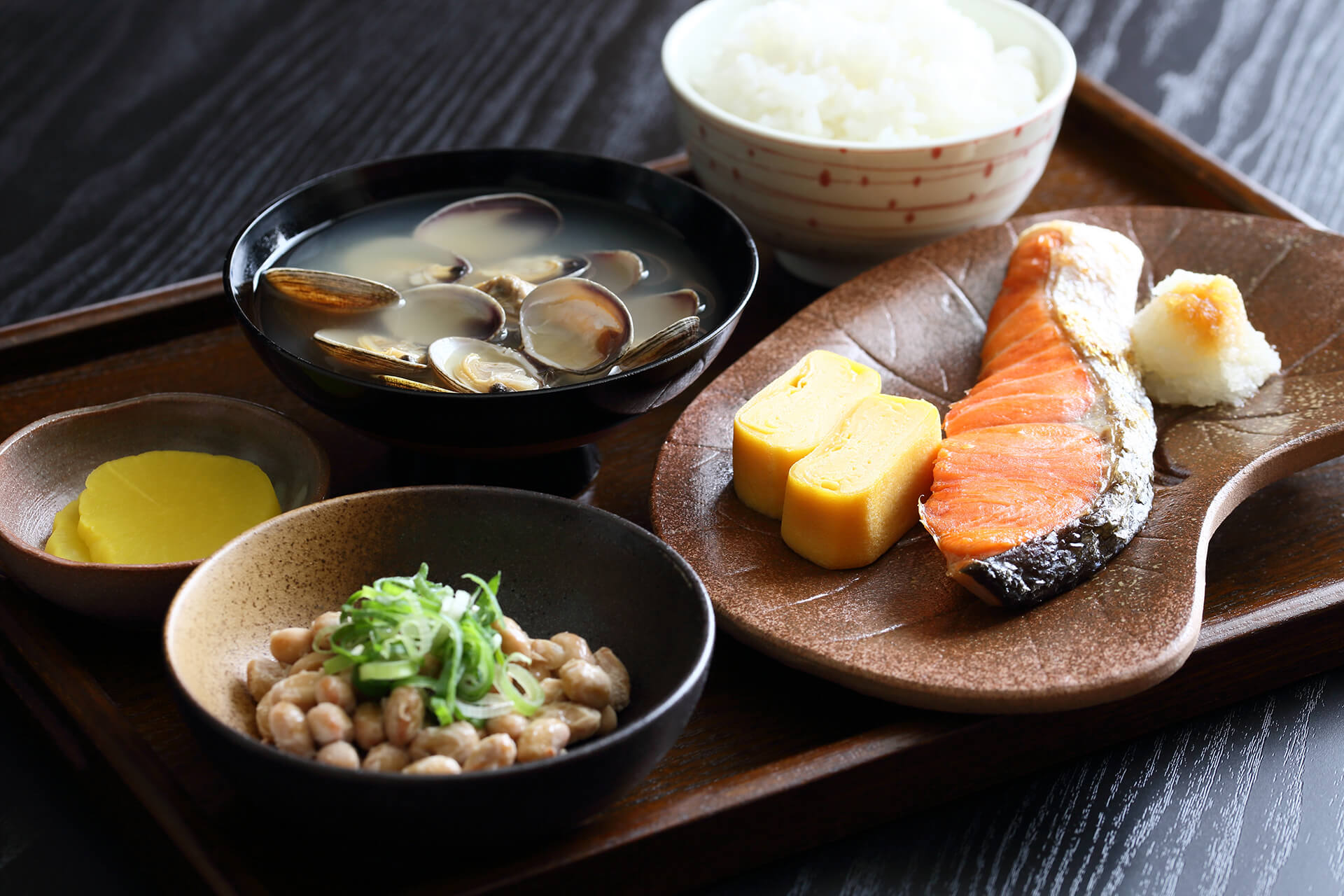
 Lunch
Lunch
Typical lunch and dinner items range from the very simple to the very elaborate. A Japanese meal does not follow a ‘starter, main course, dish’ pattern, but will instead consist of a greater number of smaller dishes. Meat is typically not a main component of meals forming a large proportion of dishes, and meat as a foodstuff is relatively new in Japan, having only entered the Japanese diet largely in the last 200 years. As an island nation, protein comes more frequently from soy and fish based dishes. The guiding principle is ‘soup and three side dishes’ served with rice, rather than the Western principle of ‘meat and two vegetables’. The more ornate the meal, the greater in number and more delicately prepared the side dishes might be.
Most Japanese will have a simple lunch. This may be a bento or lunch box purchased or prepared at home that includes rice, and a number of smaller dishes that may be vegetable based, with a few meat or fish based items. A purchased bento, will likely consist of rice and at least 3 smaller side dishes. At any number of smaller hole in the wall restaurants you may find a teishoku meal which is a combination of dishes served together at lunchtime in similar fashion with rice, soup a protein dish and some smaller vegetable dishes.

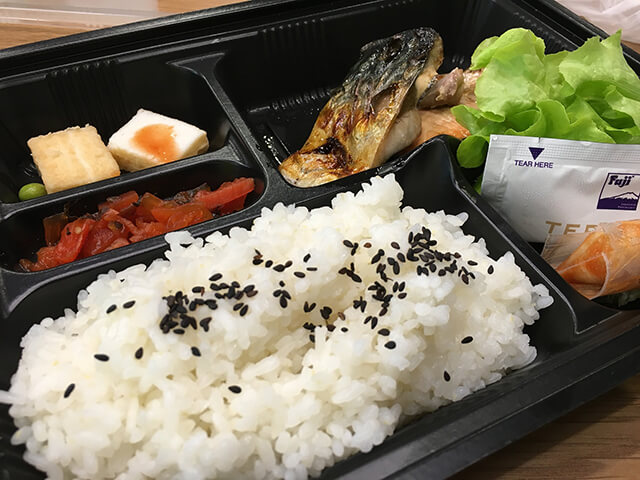
Rice is a staple foodstuff in Japan and makes an appearance at most meals and is sticky in texture. When it is not served on its own as a component of a meal with multiple dishes, it may be still be the main component of a meal. Onigiri, or a rice ball wrapped in seaweed and possibly stuffed with a filling, are a popular on the go rice based option. Onigiri may be plain or stuffed with fish or another filling. Most convenience stores carry a selection of onigiri, and just as one would find sandwich shops in the US, UK, or Australia, you can find onigiri shops in Japan.
Also popular are donburi. Donburi are bowls of rice with a flavourful topping. Some of the more common donburi are gyudon – a topping of thinly sliced beef simmered with onion in a sweetened soy sauce broth, tendon – topped with tempura, oyakodon – topped with chicken and beaten egg,or katsudon – topped with a fried pork cutlet. Other rice dishes you may encounter in your travels are takikomi gohan, or rice dishes where rice has been cooked with stock and seasoning as well as other ingredients. Chestnut, mushroom, bamboo shoots, fish, or seafood may feature in takikomi gohan. Kamameshi is rather similar to takikomi gohan, and is typically prepared in an iron dish. Of course, one can not discuss rice based dishes without discussion sushi, where a neta or piece of fish, is eaten on a seasoned compressed mouthful of rice.
When served plain, rice may be accompanied by pickles as a flavourful addition. Umeboshi or pickled plums, often feature at breakfast time. They pack a sour punch that will wake up your taste buds. Watch for the pit! At lunch and dinner, a selection of other pickled vegetables may be offered, and perhaps tsukudani, or small fish or seafood items simmered in sweetened soy sauce. These strongly flavored sides provide a flavour balance to the mild taste of rice.
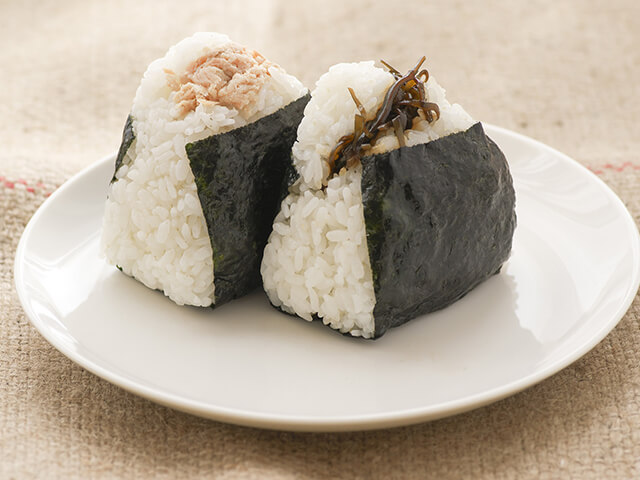
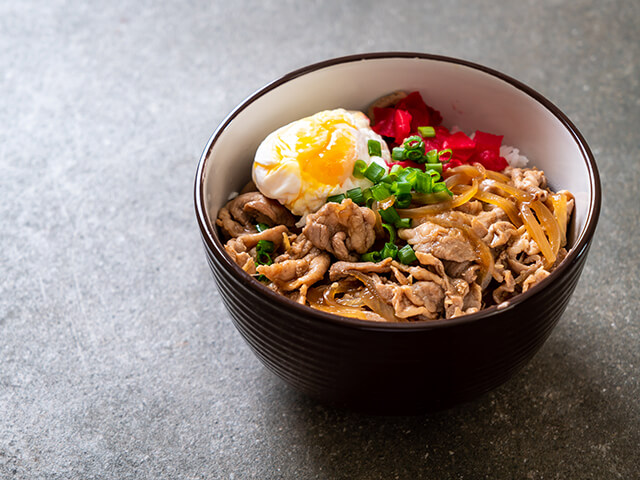
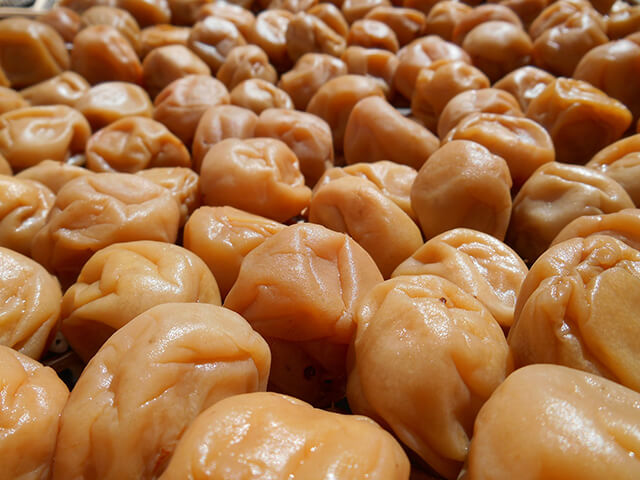
Noodles are also popular in Japan. Ramen, known as a Japanese dish outside of Japan, is considered in Japan to be of Chinese origin and you’ll often find ramen on offer at Chinese restaurants in Japan. As with many dishes, though, Japan has made ramen its own, with many regional variations that may have soy sauce, salt, chicken, pork bone, or miso broths, and various toppings and additions to the noodles and broth. Soba are noodles made with buckwheat flour and these are a favourite in mountain areas and their almost nutty flavour and toothy texture make them a firm favourite. Udon are another popular noodle type. Udon are typically white and thick flour based noodles and are a particular favourite in Shikoku.
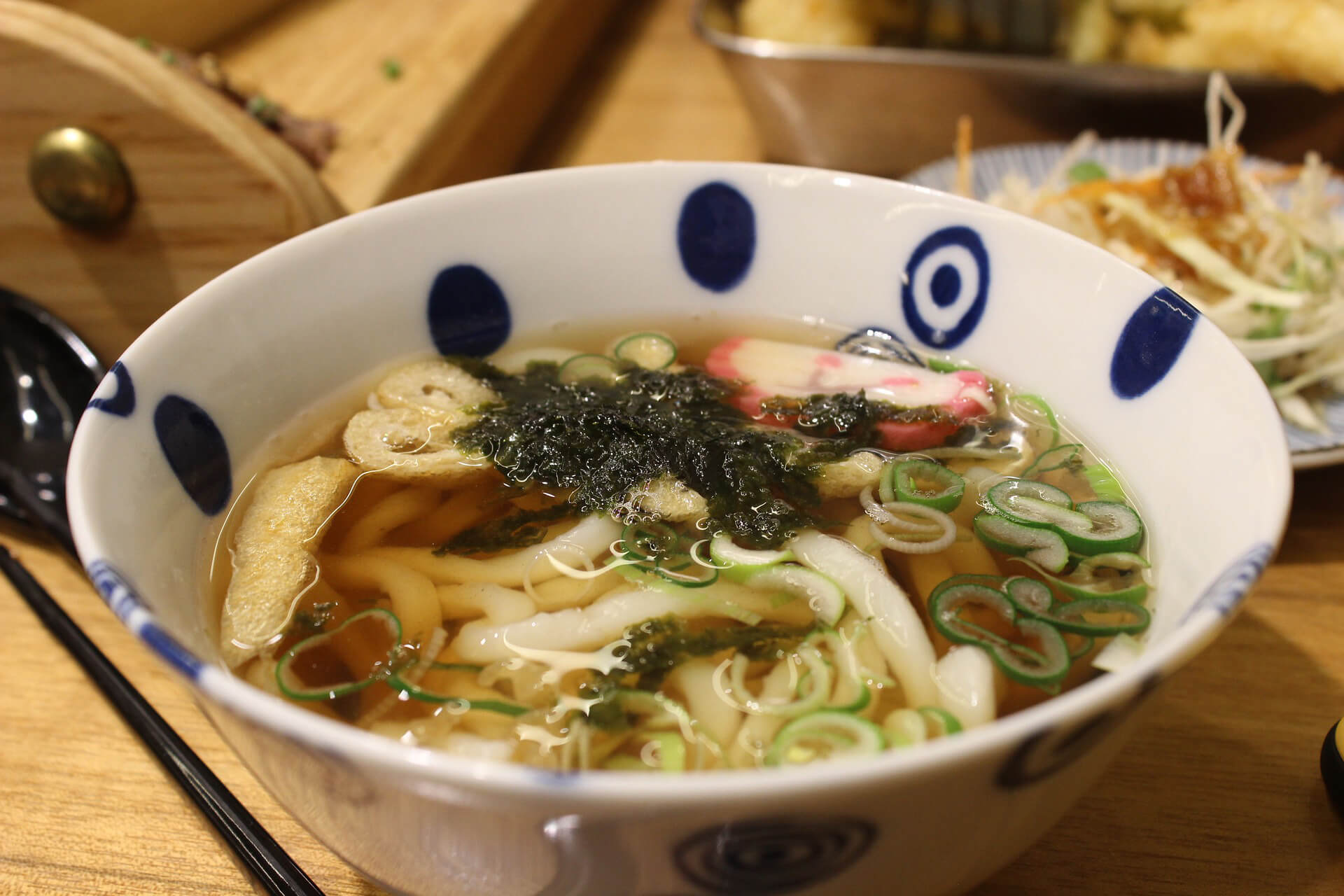
Fast food. If you are looking for something more familiar and fast, there are also small cafes with sandwich options as well as local fast food chains that may serve burgers but with a local flavour – teriyaki burgers, shrimp burgers, and pork cutlet burgers or sandwiches. Japanese style curry (rather different to Indian or Thai versions) served with rice is also a popular option. Or, you may wish to venture into a Japanese bakery. While many of the rolls or breads feature familiar additions such as cheese, ham, egg, there are also interesting breads and rolls that cater to local tastes. Among these, popular favorites include curry pan, or rolls stuffed with a mild curry filling. Yakisoba pan – a roll filled with savory fried noodles – is popular, often with young people. Mentaiko, or cod roe spiced with chili, may also be a flavorful addition to a roll. Others rolls may be filled with sweet fillings such as sweetened bean paste, or perhaps custard. For eating on the go, Japanese convenience stores are head and shoulders above those in the West with their freshly prepared sandwiches and convenience meals. These can often be heated at the check out desk and some convenience stores have tables and chairs available for customers to eat their purchases on site. Many will also offer hot grilled or fried items at the check out for take away or eat in service.
Tempura, or seafood and vegetables fried in a light crispy batter, provide a toothsome crunch while avoiding greasiness. Typically served with a sauce or perhaps a seasoned salt, tempura may be a feature of a meal or form a smaller dish in a larger multi-course meal. Tonkatsu, or breaded and fried pork cutlet is also very popular and is often served with a dark fruity sauce and shredded cabbage. If you are a fan of fried chicken, do try karaage – the Japanese variety. Smaller pieces of boneless chicken meat – often moist thigh meat – is marinated in seasoning and then fried until it is juicy on the inside, crispy on the outside. You may also find fish prepared in karaage style.
If you are looking for a slightly more casual but delicious dinner, kushikatsu, which consists of skewers of breaded fried foods – often vegetables and meats – is also a tasty option. Often served as a street food in tourist areas, some butchers offer menchi katsu, or cutlets made with potato and minced beef. Korokke or croquettes – sometimes plain or filled with a crab and cream filling, can also be found. Tofu and fish paste may also get the deep fried treatment and thin pockets of fried bean curd form the delicately sweetened casing for inari sushi, or may be found floating in a bowl of udon or sliced into ribbons for a miso soup.
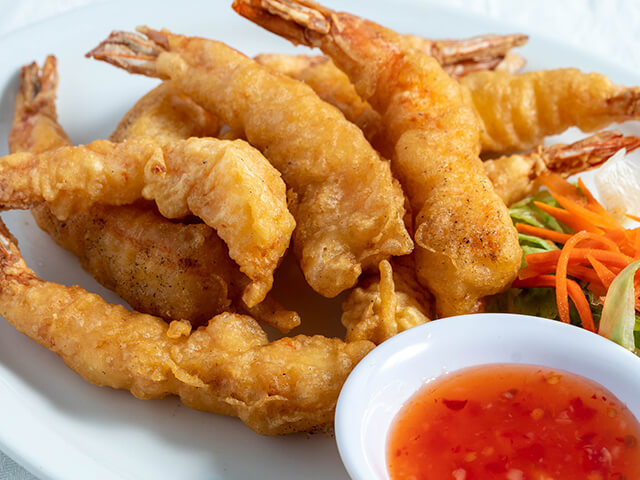
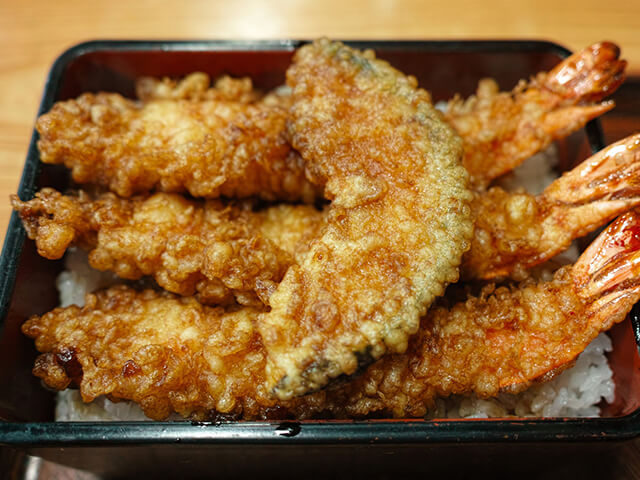
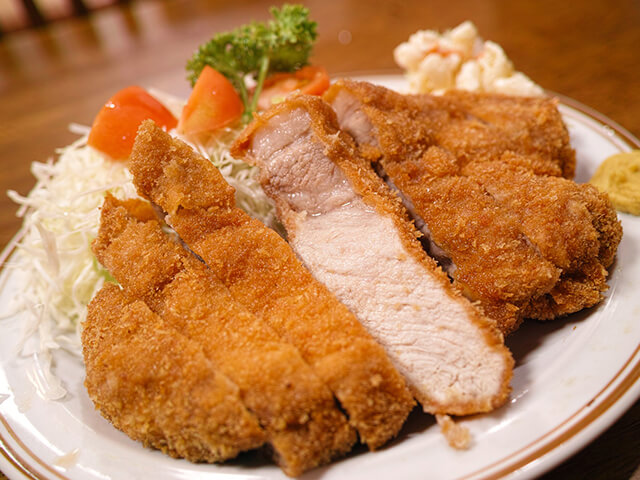
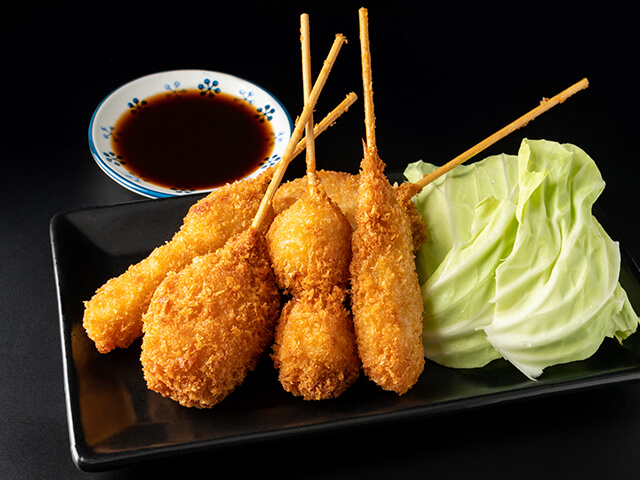
Grilled Food. Not everything is fried, however, and grilled foods are also very popular in Japan. Historically most homes had an open style irori hearth where foods were grilled over flame or wood charcoal. Grilled fish, such as ayu or sweetfish, are popular in summer and are served by salting and grilling on a skewer in front of a charcoal fire. Salted grilled fish, most commonly salmon, are a Japanese breakfast staple.
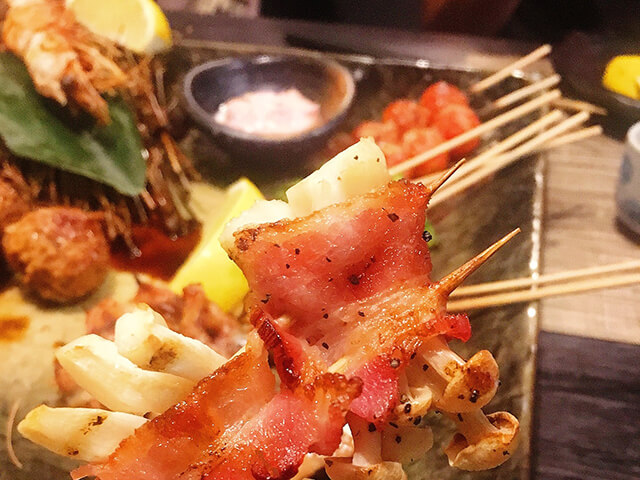
Yakitori, various parts of chicken grilled over charcoal and served with salt or a sauce with a sweet soy base, is very popular and may be served with beer in a casual setting, or taken upmarket in fancier yakitori houses. Yakiniku is a cuisine readily adopted in Japan from Korea, and consists of grilling thinly sliced meats (and vegetables as accompaniments) at a tabletop grill. Unagi and Anago – salt and freshwater types of eel – are often grilled with a lightly sweet soy based sauce and served over rice and is a very tasty preparation of these foods associated with summer.
In addition to grilling over charcoal or open flame, some grilling takes place on a teppan or flat metal grill. Meat and seafood prepared teppanyaki style remains popular in the west as this is a cooking style that has also been adopted abroad. While teppanyaki restaurants can be expensive, a more casual treat cooked in similar fashion is Okonomiyaki. Okonomiyaki is also cooked in a flat metal grill – often right at the table in okonomiyaki restaurants. This savoury pancake style food consists of a batter with cabbage and seafood or meats which is grilled and served with a fruity dark sauce, mayonnaise, katsuobushi or shaved dried fish, and dried seaweed sprinkles. In the Osaka style, okonomiyaki is prepared by mixing all ingredients into the batter, whereas Hiroshima style okonomiyaki takes a layered approach – cooking the ingredients separately from the batter in a stack of inclusions often topped with egg.
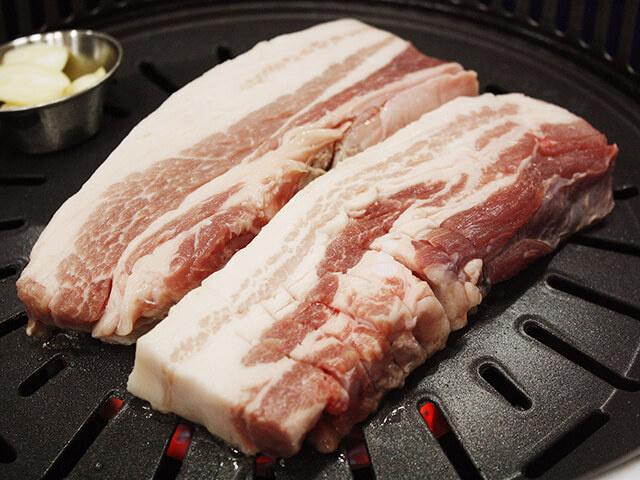
Other casual grilled foods include gyoza – or chinese dumplings – which are often cooked on a flat grill in Japan, and takoyaki – or battered balls containing octopus and topped in a similar way to okonomiyaki. Takoyaki are a speciality of Osaka but now can be found in most areas of Japan.
While simmered or stewed dishes may be popular year round, they are especially enjoyed in autumn and winter as a means to chase away the cold. Shabu shabu consists of thinly sliced meats cooked by each individual as they are simmered in a stock. Vegetables and noodles are also simmered in the stock. Sukiyaki is a beef dish, where thinly sliced beef is simmered in a sweetened soy sauce with mushrooms, tofu, shirataki or clear yam noodles, and vegetables. Slices are dipped in beaten raw egg before eating.
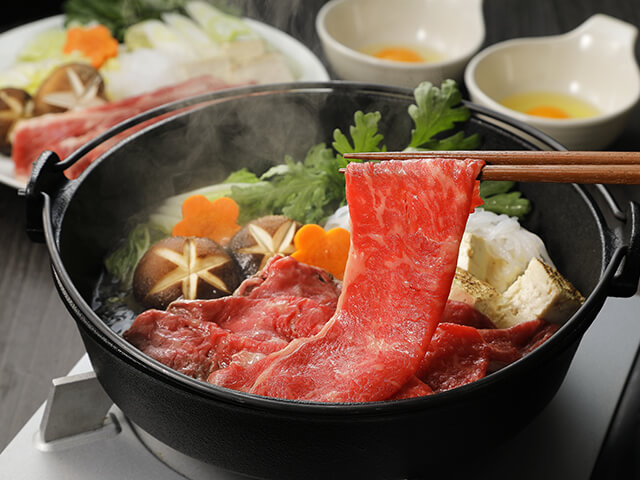
Various types of nabe or hotpot dishes are also popular in winter. Nabe are often cooked on a gas grill at the table and include vegetables, meats, and a seasoned broth. Oden is a popular wintertime food, where daikon radish, fish paste cakes, eggs, and kombu seaweed ribbons are simmered in seasoned dashi, providing a tasty way to warm up. Onsen tamago, soft boiled eggs, are commonly found in Japan, and what would a steaming bowl of ramen be without a halved boiled egg with creamy yolk.
Soup usually makes an appearance at every meal and is typically a made with a thin miso and dashi based broth. Miso soup is a key component of a Japanese style breakfast, and miso soup will also often form a part of lunch or dinner. Ingredients in the soup may vary and can include squares of tofu, seaweed, small clams, thinly sliced fried tofu, lotus root, thinly sliced meat,
Steamed foods also make an appearance in Japanese cuisine. Chawanmushi, a steamed savoury Japanese custard, is made with beaten egg, dashi, and often has small bits of shrimp, ginkgo nut, and perhaps fu or wheat gluten, inside.
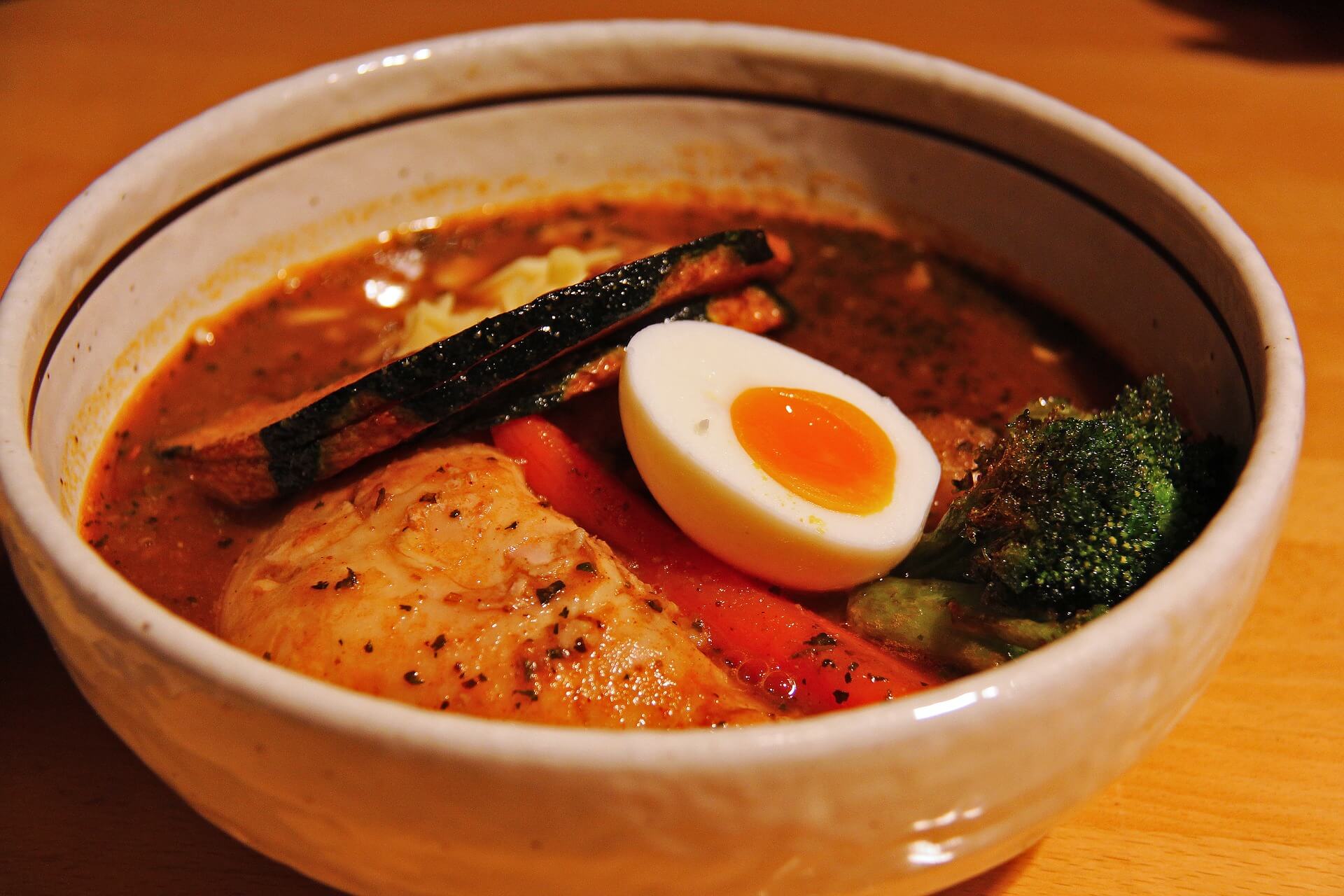
Vegetables. Having been for many centuries an agricultural society, vegetables have formed the backbone of the Japanese diet and in the countryside still do so today. Some vegetables will likely be familiar to you already: tomato, carrots, onion, spinach, eggplant/aubergine, cucumber, cabbage, peppers, okra, and corn. In addition to these more widely known vegetables, there are a wide variety of vegetables that you may be less familiar with. Kabocha, a pumpkin like squash, is often found in tempura or simmered dishes. Goya, or bitter melon, is a vegetable associated with Okinawan cuisine and is served sauteed or in salad form. Shishito are small green Japanese peppers that may be grilled or roasted, and often are found in tempura or in kushikatsu. Negi, in the onion family, are long and skinny like green onion, but are slightly more substantial in body like a leek. There are various variety of negi and they are often grilled, or served sliced raw to add flavour to dishes such as negitoro don or a onion and raw tuna rice bowl. In yakitori, negi and chicken form a great flavour combination. Gobo, or burdock root, is often sliced julienne style in salad form. Renkon, or lotus root, find itself sliced in simmered dishes, tempura, or fried dishes. You’ll recognize it by its lacey shape. Daikon is a large long white radish which is mild in flavor. It is often simmered and served in soups. It also takes a ground form – daikon oroshi which is served as a condiment to noodles and tempura as well as other foods. Japan has a variety of potatoes – ranging from the purpled skinned satsuma-imo sweet potato to yama-imo – mountain potatoes with a very much more sticky texture than potatoes consumed outside Japan. Jagaimo, which were an import to Japan in the 1600s, are a core ingredient in nikujaga – a Japanese beef and potato stew – and have found their way into many more dishes such as korokke. Ginger blossoms, or myoga, with their richly purple colour, are also a popular ingredient in Japan. Edamame, or fresh green soybeans, are now more commonly known outside Japan. They make for a tasty appetizer.
Sea vegetables also make a regular appearance on the Japanese table. Nori – sheets or strips of roasted seaweed are used in the making of sushi, are served with rice at breakfasts, and are used to wrap onigiri. Additionally kombu, a very much thicker and more substantial seaweed is used as a core ingredient of dashi stock. Wakame is a more tender form of seaweed that is often an ingredient in miso soup. Hijiki, a very dark brown-black seaweed is often served as a salad with carrot. Umibudo, or sea grapes, are found in Okinawan cuisine. Agar agar is used most commonly as an ingredient in Japanese sweets in a similar way to gelatine.
Some vegetables are best enjoyed seasonally and the harvest of these vegetables often coincide with special limited time menus at restaurants. Takenoko or bamboo shoots appear in the spring through about May. Served fresh in a variety of ways they have a more delicate flavour than the canned varieties often found outside of Asia. Sansai are foraged mountain vegetables, the best of which may be available in the spring. Among these you’ll find fukinoto – or butterbur blossoms (or fuki – the butterbur itself), kogomi, or ostrich fern, nanohana or flowering rapeseed, bracken, and fiddleheads.
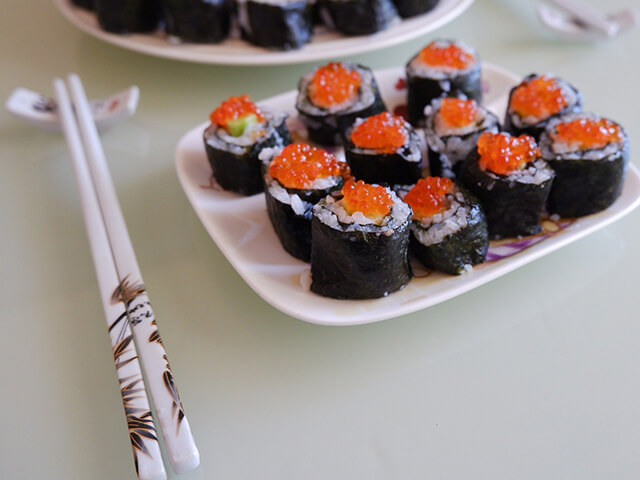
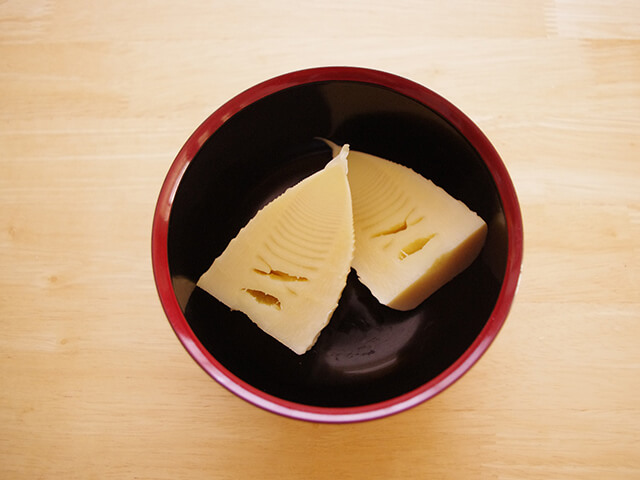
Tea. With regard to non alcoholic drinks in Japan, tea reigns supreme. Tea is grown throughout Japan but well known tea growing regions include Shizuoka; Kagoshima, Miyazaki, Saga and Fukuoka prefectures in Kyushu; Kyoto and Nara prefectures, especially the Uji/Wazuka area; and Mie and Aichi prefectures. Japanese Green tea, Oolong Tea, and Black tea all come from the same plant, and their variations arise based on how the tea is harvested and prepared. Green tea, which has enjoyed a surge in popularity in the West in recent years, is the most common form of tea drunk in Japan. The leaves are steamed and processed before they have a chance to oxidize. This gives the tea a distinct flavor and allows it to keep its fresh-picked green colour. Oolong and Black tea leaves are allowed to partially or fully dry or oxidize before they are prepared. The prized first harvest of new leaves from the tea plants form the gyokuro, or ‘first flush’ tea leaves. These are grown under shade and have a particularly unique flavor. Matcha, the green tea leaf powder that has taken the world by storm, is also an early harvested and shade-grown tea. After a similar process to gyokuro, the leaves harvested, steamed, dried and keep their vibrant green colour. Gyokuro tea is rolled as part of the production process and then dried. In the production of matcha, the leaves once dried are ground to a fine powder which is used to make the matcha tea used in tea ceremonies. Its strong taste lies in the fact that the leaf powder is whisked into the water to make the tea, whereas for gyokuro, the leaves are steeped to make tea in the normal fashion. Sencha is tea grown in sunlight and is made from the tender upper leaf shoots. Bancha and Hojicha are made from the lower leaves. Bancha is harvested, steamed, rolled and dried for use as a tea that is steeped and also retains a pale green colour when brewed. Hojicha is a tea that is roasted following the drying process, resulting in a dark brown tea with a distinct flavour.
Tea can also be made with some additions or even from plants that are not traditional tea plants. Genmaicha is tea combined with roasted brown rice, which gives it a slightly savoury taste. Teas in Japan may also be made from mugi or barley, mushroom, kombu or seaweed, soba or buckwheat, and gobo, a form of burdock. These teas are often found in mountainous areas where the climate is too harsh for the easy growth of tea plants. Tea is widely available in Japan, and various bottled varieties, including jasmine teas and sometimes even teas mixed with fruit juice can be found bottled in convenience stores throughout Japan. To try a selection of some of the finer more delicate teas, you may wish to take tea at a tea producer or tea retailer, some of whom offer tea houses at their retail shops. There are even restaurants where some tea producers include tea throughout the preparation of the meal with items smoked with tea, or even beer or cocktails that incorporate tea.
By far, the most traditional way to take tea is in a tea ceremony. The way of tea was made famous by monk Sen no Rikyu as an expression of hospitality and enjoying a fleeting moment with someone. Matcha tea predominates in chanoyu or the tea ceremony and may be koicha or ‘thick’ tea or usucha or ‘thin’ tea. The tea ceremony contains a very formalized set of rituals and there are many schools of tea that have branched off following the death of tea master Sen no Rikyu. At a tea ceremony, you will be able to see the formal prescribed method for preparing tea in this manner, and the tea is often served with a traditional Japanese sweet.

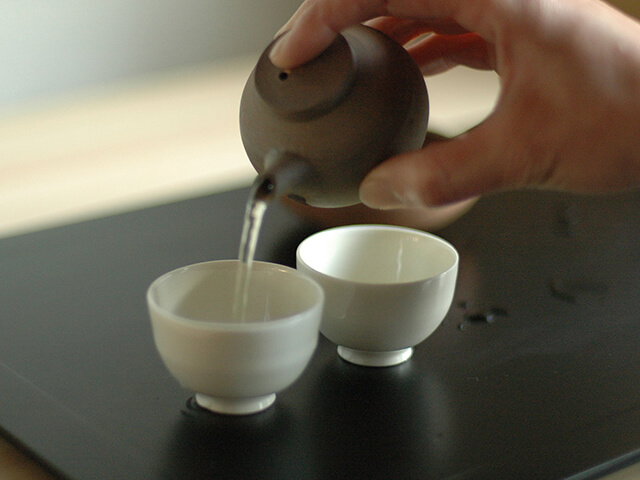
Eastern Hokkaido
Eastern Hokkaido is a wonderland of untouched wilderness. It is home to over 200 animal species, and is characterised by dramatic landscapes. The Kushiro and Lake Akan areas are home to the Tancho or red crowned cranes that are emblematic of Japan. Conservation efforts in the Kushiro wetlands and Akan National Park have brought the red crowned cranes back from the brink of extinction. Steller’s Sea Eagles can also be found in the Kushiro wetlands. Lake Akan is known for its marimo – lake algae that in a rare phenomenon naturally forms into round balls at the bottom of the lake. An Ainu village on the lake preserves Ainu crafts, dance, and music. Lake Kussharo is Japan’s largest caldera lake, and Lake Masshu, known for its exceptionally clear waters, are highlights of eastern Hokkaido. The very far east, the Shiretoko Peninsula, has been designated a UNESCO World Heritage Site and is home to bears, dolphins, whales, and killer whales.

